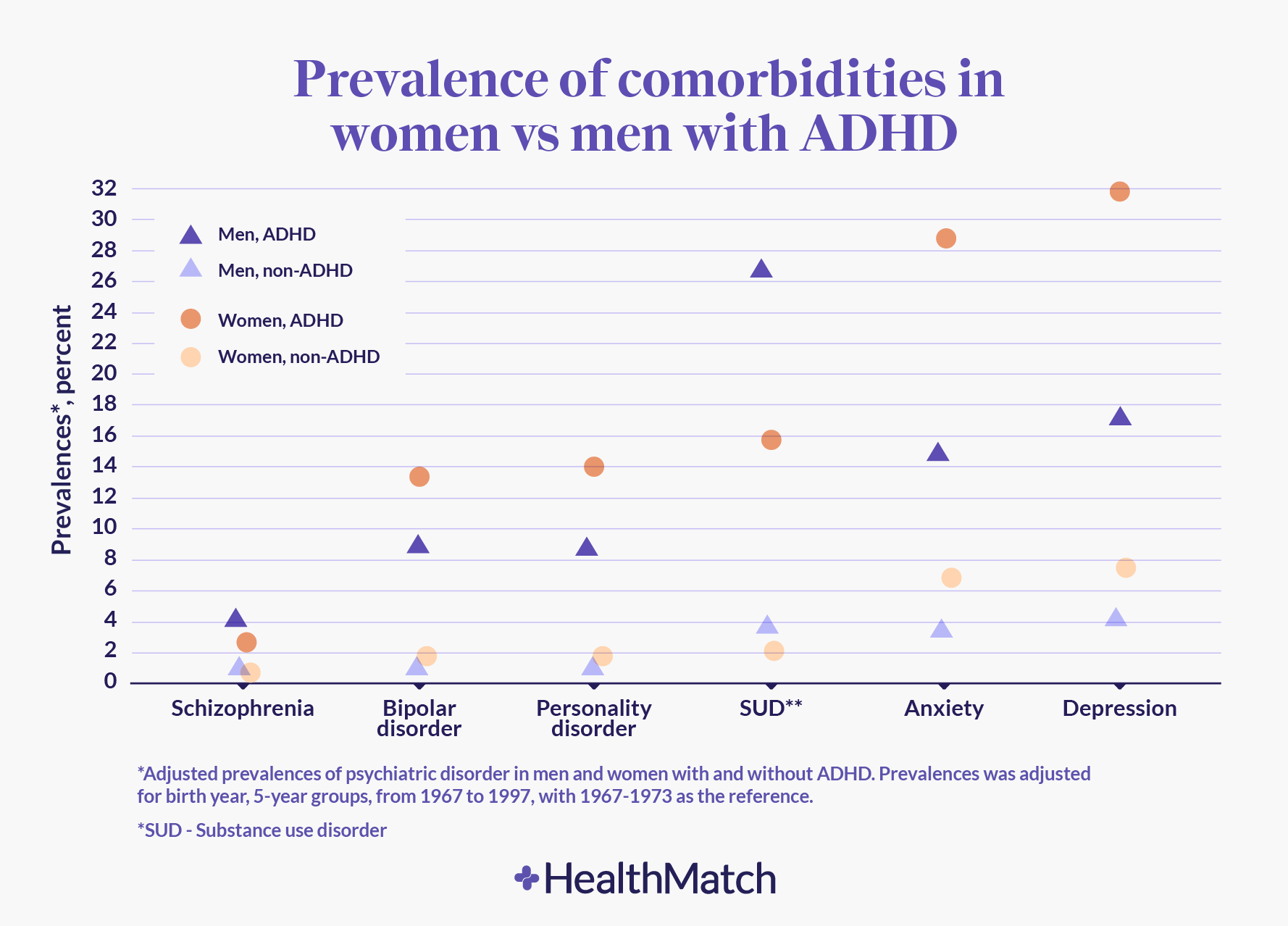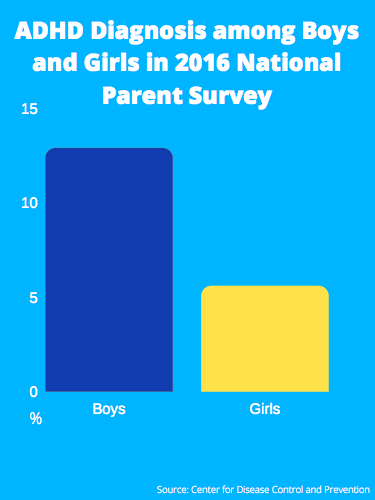Attention-deficit/hyperactivity disorder, or ADHD, is a neurological disorder characterized by a persistent pattern of inattention that interferes with daily functioning. Individuals with ADHD might also have symptoms of hyperactivity and impulsivity, but they are not required for a diagnosis.
Common Symptoms in Women
Women more commonly have inattentive symptom presentation, which includes these symptoms (according to the DSM-5):
- Forgetfulness in daily activities
- Getting easily distracted
- Failing to give close attention to details or making careless mistakes in activities
- Trouble holding attention on tasks
Women with ADHD struggle more with socialization than men do. Women often experience rejection sensitivity, which is an intense emotional response to real or perceived rejection. Women are often overwhelmed by the demands of relationships and tend to have fewer meaningful relationships. They often also have trouble maintaining friendships.
Women also tend to experience more hypersensitivities, including sleep difficulties, tactile defensiveness and sensory overload, as well as headaches, migraines, stomach aches, and nausea. Furthermore, psychological distress, feelings of inadequacy, low self-esteem, and chronic stress are common.

Fig. 1. Teh, Dawn. Health Match.
Symptoms of impulsivity in women increase their chances of engaging in high-risk behaviors as well as addictive behaviors.
By adulthood, most women with ADHD have at least one comorbid disorder. In fact, 25-40% of people with ADHD have an anxiety disorder. Other common comorbid disorders include mood disorders, dysregulated eating, and personality disorders.
Researching ADHD
There is very little research studying the effects of ADHD on women, as most research focuses on children, adolescents, and men. In children, studies show that boys often get a more accurate diagnosis than girls. Boys tend to show more hyperactive behavior than girls do, and ADHD researchers often focus on studying hyperactive behavior over other symptoms of ADHD that are more common in girls. More research is necessary to help experts accurately identify, diagnose, and treat symptoms earlier in girls and women.

Fig. 2. Koch, Jenna. Marquette Wire.
ADHD Diagnosis
The prevalence rates of ADHD in men and women are similar, yet the diagnosis rate among American men is 69% higher than it is among American women. Men and boys are diagnosed far more commonly than women and girls, and most women with ADHD do not get an accurate diagnosis until they are in their thirties or forties.
There could be several reasons for this:
- Research shows that women are highly motivated to hide their ADHD symptoms and compensate for them. The symptoms that are observable are often anxiety or mood-related, which can lead to misdiagnosis.
- Rating scales for ADHD are still skewed toward male behavior symptoms.
- Stereotypes, bias, and gender role expectations all impact the diagnosis of women and girls.
- Parents, teachers, and pediatricians might miss ADHD symptoms in young girls because they are not obvious.
- ADHD is often a misunderstood disorder, even by many doctors.
According to a study conducted by the CDC, the number of privately insured US women ages 15-44 years who filled a prescription for a medicine to treat ADHD increased 344 percent between 2003 and 2015. This reveals that more women have started to finally receive an ADHD diagnosis and receive treatment.
I did not know that women are more commonly known for having inattentive symptom presentation. When looking at the rate of diagnosis I understood why I never knew that. It was interesting to see how many other factors influence ADHD in women and how many more side effects can occur. I am curious if this is more of a social influenced given the many societal pressures women have to face or if this is due to genetics. I’ve never thought about this almost nature or nature debate and this post gave me a lot to think about.
It’s concerning how much bias there is in the research regarding ADHD in women. Especially since it’s a disorder with almost identical prevalence rates in males and females, the lack of research focused on female patients appears to reflect certain stereotypes within scientific and medical communities. I’ve heard that ADHD is the most misdiagnosed and simultaneously underdiagnosed mental health disorder, and I can’t help wonder if this bias is a large component of that issue.